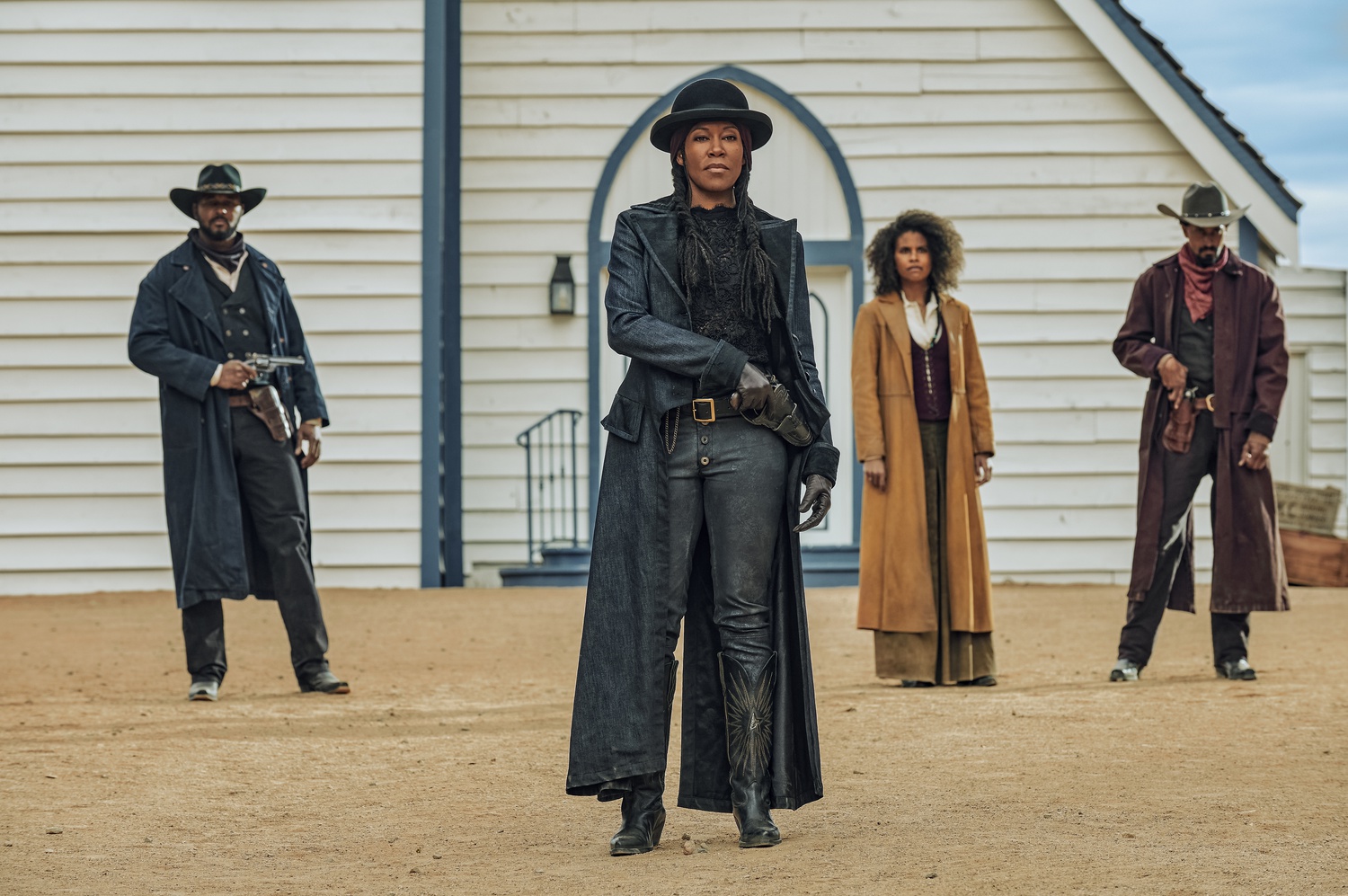
News
Cambridge Residents Slam Council Proposal to Delay Bike Lane Construction

News
‘Gender-Affirming Slay Fest’: Harvard College QSA Hosts Annual Queer Prom

News
‘Not Being Nerds’: Harvard Students Dance to Tinashe at Yardfest

News
Wrongful Death Trial Against CAMHS Employee Over 2015 Student Suicide To Begin Tuesday

News
Cornel West, Harvard Affiliates Call for University to Divest from ‘Israeli Apartheid’ at Rally
‘The Harder They Fall’ Review: A Fun Retelling of a Western Falls A Little Flat in Execution
Dir. Jaymes Samuel — 3.5 Stars

“These. People. Existed.” Jeymes Samuel’s Western “The Harder They Fall” doesn’t begin as one would expect — that is, not with a guitar tune in a saloon, and not with sweeping wide shots of Monument Valley, but with large white text on a black background. Samuel’s film revives a quintessential American genre that summons imagery of John Wayne as Ringo Kid or Clint Eastwood as Blondie. Yet “The Harder They Fall” doesn’t just subvert genre expectations with a Black ensemble cast, it also stresses the importance of Black figures as a central piece of history, and an often forgotten element of the mythic, cinematic West.
The film follows Nat Love as he reunites with his old lover Mary Fields, only to embark on a quest for revenge when his old enemy Rufus Buck is released from prison. The film trails Love and his plan to kill Buck, while also tracking Buck’s efforts to reshape the town Redwood into a paradise for his gang. The film’s main cast are all based on real life figures, such as Stagecoach Mary or Cherokee Bill.
Samuel infuses his film with the visual ethos of Western cinematography. “The Harder They Fall” pays careful attention to the power of landscapes: From the opening shot displaying Love’s childhood home being swallowed by the desert to the closing shot illustrating Love chasing Fields across the open, rugged landscape, Samuel’s imagery is befitting of a John Ford Western. Moreover, during some of the film’s many face-offs, Samuel emphasizes scope — not just with the sweeping desert, but also through framing. His extreme wide shots place characters on opposite sides of the frame with vast negative space between them; it suggests a grandeur not just to the Western landscape, but also to the film as a visual medium. When Cherokee Bill and Jim Beckwourth talk, for instance, Samuel shoots the scene from a bird’s eye view, with long emphatic shadows that crawl down the length of the screen.
The film also aims for a modern twist with fun, punchy dialogue and bright primary colors over the warm earth tones of traditional Westerns. For instance, the fight scene between Trudy Smith, Buck’s right-hand woman, and Fields takes place in a barn filled with bright red, yellow, and blue dyes. The production design on the fictional town of Redwood also opts for an almost-childish, surrealist appearance with its pastel blue, red, and yellow buildings. Samuel’s visual style is an integral part of his storytelling, and that style includes aggressive pop-up text. For instance, when Love kills a man who helped murder his parents, each of his gunshots are punctuated by a word in the film’s title – “The,” “Harder,” “They,” “Fall.” The film also features heavy amounts of split screens, which heightens the feeling that this is a modern take on an old genre.
The film also includes an excellent soundtrack. Rather than opting for traditional folk, the score instead plays reggae and rap by Koffee and Jay-Z over shootouts and landscape-shots. Samuel also uses diegetic sound to wonderful rhythmic effect — for instance, in one scene, Fields pounds the butt of her rifle into the ground, starting a drumbeat that leads into a song. It’s a memorable character moment that introduces Fields as a tough, no-nonsense kind of woman.
However, the film does fall flat in developing most of its characters. As the main antagonist, the audience is given little insight into Buck: We don’t know much about his motivations, why Smith is so devoted to him, or why Cherokee Bill obeys him. All we know is that he is a violent, terrifying man — in short, a bland, generic Western villain. Moreover, the supposedly shocking revelation that Love and Buck are half-siblings somehow comes off as wildly boring, flat, and befitting of a cheap soap opera. It’s a jarring moment that is further cheapened by the poorly chosen melodramatic opera music that plays in the background. Ultimately, this “twist” adds no emotional weight to the final scene, which leaves audiences feeling underwhelmed after the film ends. Moreover, despite the stacked cast, the acting is somewhat bland. For example, while Fields is a sultry counterpart to Smith, Zazie Beetz’ acting is often hamfisted and over-the-top.
While his film doesn’t quite stick the landing, Samuel’s take on this classic genre is certainly a fun watch. “The Harder They Fall” pays homage to the decades-long canon of Westerns that came before it, while updating it with Samuel’s unique visual style. Putting greater emphasis on forgotten Black figures in the American West – and revitalizing their presence on the big screen — means that “The Harder They Fall” also transcends its genre-blending fun. “The Harder They Fall” was released on Netflix on Nov. 3.
Want to keep up with breaking news? Subscribe to our email newsletter.
